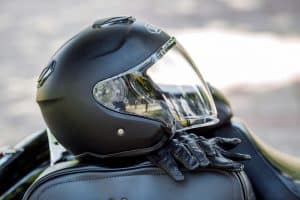Head’s Up: Snell Changes Rating System for Motorcycle Helmets
 There’s nothing quite like hopping on a motorcycle and hitting the open road – so long as you don’t actually HIT the road. If you do, and if you want to survive a motorcycle crash, you had better be wearing the right helmet.
There’s nothing quite like hopping on a motorcycle and hitting the open road – so long as you don’t actually HIT the road. If you do, and if you want to survive a motorcycle crash, you had better be wearing the right helmet.
But selecting a helmet that will protect your head – and everything inside it – in the event of an accident just got tougher. The Snell Foundation recently announced changes to its motorcycle helmet standards. According to an article by the automotive news and opinion website Jalopnik, the relaxation of Snell’s standards may render the Foundation’s rating system for motorcycle helmets meaningless.
What does this mean for motorcycle riders – particularly those riders who would prefer to walk away from a motorcycle accident without serious head trauma? Read on for answers.
What is the Snell Foundation?
Founded in 1957, the Snell Foundation is a not-for-profit organization dedicated to motorcycle helmet education, research, development, and testing. In the past, Snell was credited with developing a new standard for helmet safety that exceeded the standard set by the U.S. Department of Transportation (DOT). DOT testing is based on the standard for automobile helmets despite the obvious differences in the type of impact a helmet typically sustains when worn inside a vehicle during a crash versus the type of impact it may sustain when worn during a motorcycle crash.
While the United States does not require motorcycle helmets to meet Snell’s standards, a Snell sticker affixed to a helmet has long been a symbol of enhanced safety.
Why did the Snell Foundation change their helmet rating system?
While the Snell label is still synonymous with safety, per the recent Jalopnik article, the Foundation’s helmet testing methodology and safety recommendations are no longer the most advanced available. Instead, Jalopnik points to the helmet testing formula used by the Economic Commission for Europe (ECE) and the International Motorcycling Federation (FIM) – and now required by most European countries – as being the standard to meet. “ECE and FIM have developed a rotational way of testing helmets, which sees the lid crashed in six axes more in keeping with real world situations.” This new type of testing requires helmet manufacturers to “build softer helmets that deform more to lessen brain trauma.”
Snell’s testing, on the other hand, requires the helmet to sustain a two-impact hit in the same location. This type of hit, according to the Jalopnik article, “seems far more likely in a car with a roll cage than on a motorcycle.”
Under their current testing methodology, Snell considers harder helmets to be safer than softer helmets. This, of course, directly contradicts the ECE and FIM approach to helmets. To address this difference in standards, the Snell Foundation created a second standard for motorcycle helmets in order to keep the Snell Foundation logo on helmets that meet ECE and FIM standards. This new Snell standard eliminates the second hit during helmet testing but does not include any of the rotational damage testing developed by ECE and FIM.
I’m about to purchase a new helmet. What does this change mean for me?
Buyer beware. According to Jalopnik, M2020D-rated helmets are subjected to the standard, double-hit test. M2020R-rated helmets undergo the newer Snell test which eliminates the second hit. Helmets with either rating receive the same Snell Foundation sticker on the outside of the helmet – even though the decal affixed inside may differ depending on the type of test. Jalopnik believes this makes it possible to build ineffective hard helmets that meet DOT standards and still receive a Snell rating.
What should I look for when purchasing a motorcycle helmet?
In addition to selecting a helmet that at minimum meets DOT safety standards, the National Highway Traffic Safety Administration (NHTSA) offers guidelines that focus on other important criteria, including:
- Shape – Human heads come in all shapes and sizes, and both factors are significant when you’re choosing a helmet. Start by considering the shape of your head. It should fit into one of three categories: round oval, intermediate oval, or long oval. Use a mirror to look view your head from above. Be sure that you are looking at the shape of your head – not the shape of your face.
- Size – Once you’ve determined your head shape, it’s time to think about sizing. Measure your head using a cloth measuring tape, beginning above your eyebrows and circling the tape around the “thickest point in the rear of your head.” Then check this measurement on a helmet size chart. It is critical that you choose a helmet that fits properly.
- Style – Motorcycle helmets are available in a variety of styles with a range of features, including safety features. Do your research and consider the type of riding you will be doing as well as the type of motorcycle you ride.
It is important to note that the NHTSA does not approve helmets or other motor vehicle equipment. However, they do perform testing on existing helmets currently in the market. In most instances, helmets are randomly selected for testing, although the NHTSA does consider feedback and other complaints from consumers when determining which helmets to test.
Does it really matter what type of helmet I wear?
Yes, it absolutely matters. For as fun as they are to ride, motorcycles are inherently risky for riders. By their very design they offer virtually no protection in the event of an accident. Yes, they are agile and in the hands of a skilled rider may be maneuvered to evade some dangerous situations, but that is not always the case. Motorcycle crashes can cause serious head trauma, from concussions to traumatic brain injuries that may lead to lifelong consequences. And that’s if you are lucky enough to survive. Make no mistake: The helmet you choose to put on your head before you get on a motorcycle is crucial.
Of course, the reality is that any type of motor vehicle accident can result in serious or even catastrophic injuries. However, it is not an exaggeration to say that motorcyclists are typically in more danger than drivers of other types of vehicles, and even with the best helmet there is still risk. If you or a loved one were involved in a motorcycle accident and suffered injuries, Larson Law can help you secure the compensation you deserve. With offices in Minot and Bismarck, our experienced Minot motorcycle accident lawyers represent clients throughout the area. We handle accident cases on a contingency fee basis, meaning we do not get paid unless you do. Call us today at 701-484-HURT or complete our contact form to schedule your free consultation.

Mark Larson is a Certified Civil Trial Specialist and Certified Civil Pre-Trial Specialist focusing on personal injury, car accidents, wrongful death, and oil field claims. Since 1979, Larson Law has served the injured throughout North Dakota. Read more about Mark V. Larson.
